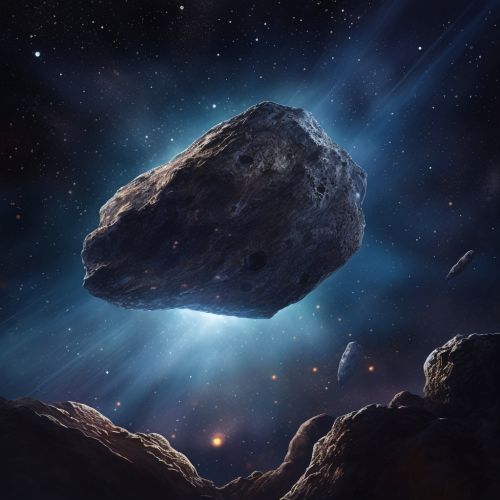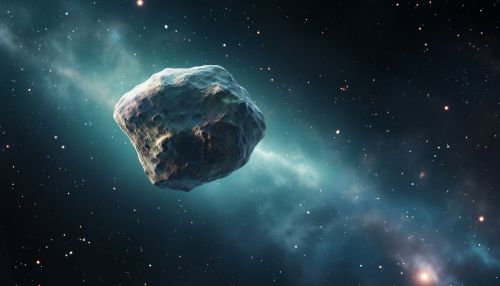Asteroids
Introduction
Asteroids, also known as minor planets or planetoids, are rocky, airless remnants left over from the early formation of our solar system about 4.6 billion years ago. They are composed of various types of rock and metals with many being rich in the precious metals. The majority of these celestial bodies can be found orbiting the sun in a region of space known as the asteroid belt, located between the orbits of mars and jupiter.


Classification
Asteroids are classified into three broad types based on their composition: C-type (carbonaceous), S-type (silicate), and M-type (metallic). C-type asteroids are the most common and are dark in appearance due to their carbon-rich composition. S-type asteroids are made up of silicate materials and nickel-iron, while M-type asteroids are metallic (nickel-iron).
Size and Shape
The size of asteroids varies greatly; the largest, Ceres, is nearly 1,000 kilometers across and is classified as a dwarf planet, while the smallest asteroids, known as meteoroids, are less than 1 meter (3.3 feet) in diameter. Most asteroids, however, range in size from 50 to 100 kilometers in diameter. Asteroids can be round, potato-shaped, or even have two lobes or more, like the asteroid 243 Ida.
Asteroid Belt
The asteroid belt is a region of space located roughly between the orbits of Mars and Jupiter. It is populated by millions of asteroids, which are thought to be remnants from the early solar system. The asteroids in the belt are divided into different families, named after the largest member of each family, such as the Eos family or the Themis family.
Near-Earth Asteroids
Near-Earth Asteroids (NEAs) are asteroids that have orbits that pass close to that of Earth. As of 2020, scientists have identified more than 20,000 NEAs. Some of these asteroids are classified as Potentially Hazardous Asteroids (PHAs), which have the potential to make threatening close approaches to the Earth.
Asteroids and Earth
Throughout history, asteroids have collided with Earth causing significant damage. The most famous of these is the asteroid that is believed to have caused the extinction of the dinosaurs 65 million years ago. Today, scientists closely monitor asteroid paths to predict potential collisions with Earth.
Asteroid Mining
Asteroid mining is the exploitation of raw materials from asteroids and other minor planets, including near-Earth objects. These celestial bodies could be used as a source of precious metals and other resources, potentially providing a sustainable supply of raw materials for humans both on Earth and in space.
